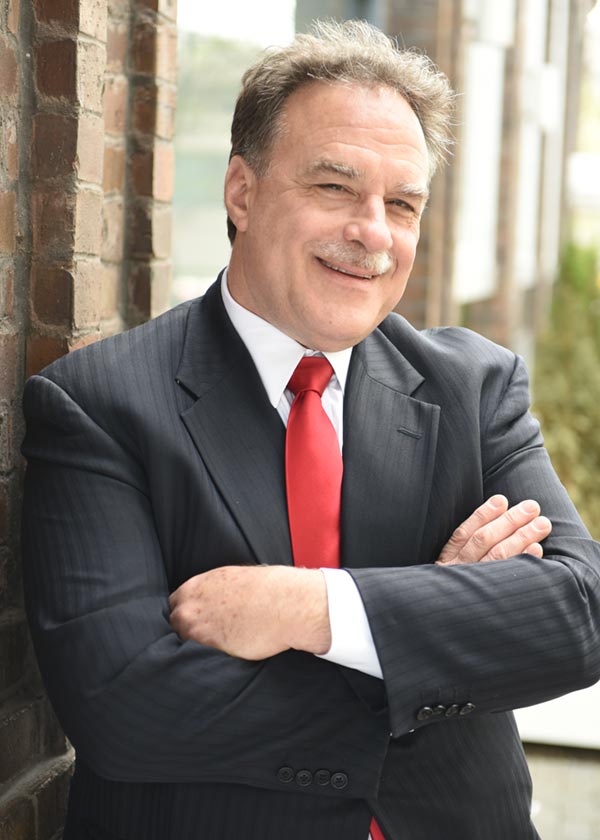Many of us naturally make decisions based on what we see in our environment, that it becomes easier to jump in the wagon without thinking much further. Brian Kasal, the CEO and Founder of FourStar Wealth Advisors, advises us one thing: don’t be stupid. In this episode, he explains what he means about that while taking us across the changes in the market in the past year—from unemployment to job stimulus. Brian also talks about diversification strategies for investors, participating in commercial real estate opportunities, and more. He also shares how he is helping take investors off the proverbial cliff of getting in or out at the wrong time and creating a national firm.
—
Watch the episode here:
Listen to the podcast here:
Winning In Real Estate Through Smart Diversification Strategies With Brian Kasal
Brian Kasal is the CEO and Founder of FourStar Wealth Advisors, an SEC-registered investment advisory firm headquartered in Chicago. Brian holds an MBA from the Unversity of Chicago Booth School of Business and has been a guest lecturer for their MBA program.
—
Brian, welcome to the show.
Thanks. It’s great to be here, Sam.
The pleasure is all mine. I’m excited about this episode because I think you can present some viewpoints that maybe a lot of guests that we have on here aren’t going to have the depth of experience that you do to present on. I’ve got three questions I asked the same questions to every person that comes on the show. Can you briefly tell us where did you start, where are you now and how did you get there?
I’m a little more vintage than maybe some of your guests. I’ve been in the financial advisory industry since 1983 after college. Back then, we were stockbrokers, then we were financial advisors, now we’re investment managers. Things progressed and changed over time. I was at Paine Webber then I’ve been at Lehman Brothers. I partner at William Blair and Company in Chicago with Morgan Stanley. In 2014, like many senior producers left and started their own firms.
We’re creating a firm that’s a national firm now. We’re in four states and then we’re bringing advisors on and acquiring other firms. We’re going to be a national brand over the next years. We’re a semi-national brand already but that’s how I built it. I did an MBA at the University of Chicago along the way. It opened a lot of doors. We’re having a lot of fun with it. We’ve done a lot of work building a national firm with what advisors and clients need. That’s where we are now.
Let’s talk about the main reason we came on this show, which is to get your view on the markets and commercial real estate and hear what you guys are doing for investors. Let’s break this thing down, dig inside your head and know what you see happening now.
Talking about the financial markets, we were going along in a very orderly economy in the last administration. We probably had the best economy in American history prior to the pandemic, the lowest unemployment and fastest growth we’ve seen in 30 years. A lot of things are going on well. Pandemic started then part of our reaction was to create an environment where we shut down about 40% of our economy. It was devastating the economy and markets.
Naturally, we saw the fastest decline of 35% in American history. The market was just in a complete panic. We recovered from that but a lot of people made plenty of mistakes during that process. We’re back above there and we’re going on. We have an economy that’s recovering but we did throw a lot of money at it to make sure we didn’t completely fall off the end of the cliff. In a period of a year and a half since 2020 between the previous administration and now the current Biden administration and the federal reserve, we put about $12 trillion into our economy.
We’ve never done anything like that. It’s mind-boggling when you think of the assistance that they gave to the economy and maybe they did too much. There’s so much money the fed has authorized that is sitting on the books of the banks and they’re not lending it. It’s just sitting there. There’s a lot of stimulus money that isn’t going to come out for the next year or two. We maybe don’t need that anymore.
The best stimulus is a job.
We probably need to end the stimulus. In fact, some of the stimulus programs like the extra surcharge on unemployment benefits and the PPP programs were pretty much figured out that was slowing the economy down. We did a podcast episode where we talked about how the best stimulus is a job.
It’s a little provocative to say that but in the end, it’s probably true. People are out working, paying taxes, paying their rent, those are the right things to do. The bottom line is the economy is recovering. We went off a lot of the stimulus programs on Labor Day weekend. Now we’ll see what happens to all of that. I think it’ll be very positive. It was becoming a negative that we had so much stimulus. It was too much.
The markets continue to go up. We see no reason for them to go down. Maybe they’re not going to spike higher but we should see continuing rising financial markets. Since there’s so much money out there, we’re seeing inflation. That could be a problem for the economy. We’re seeing auto prices are up big, many goods and food are up 4%. That’s big for food. My favorite is bacon is up 13% and we’re also seeing inflation in stock prices. That’s partly what it is and also, in real estate prices.
In our department, absolutely. It’s crazy what is happening. What do you mean when you say maybe we stimulated too much? What will be the effect of that?
If there’s so much stimulus then people have no incentive to go back to work. There were literally millions of people getting large checks from the government. There was a period of time there where a couple, husband and wife, two husbands or two wives, could be at home and they could get between benefits and cash from the government over $80,000 a year. Some people are like, “Why would I go to work?”
For the majority of Americans, why would you possibly go to work? That doesn’t make any sense. We’ve seen that, of course, even the labor shortages, which we’re not short on people that could work. We’re short on people who are willing to work.
There are ten million jobs posted. The largest available jobs in American history. There’s a lot of people at home on the couch. There’s a connect there and we need to end that disconnect.
McDonald’s entry-level job is paying $15-plus an hour. That’s $30,000 or something a year. You don’t have a decided skill to get the job. It’s just you need to show up, figure things out and go to work.
With some of those programs being canceled then the normal unemployment is still there. It’s still $24,000 is what you can make. That’s not a real living in America. That’s going to give people the impetus to get off the couch and go back to work.
Investors should only take the risks they need to meet their goals.
I love your quote there that the stimulus is a job. Let’s talk a little bit about what you guys do on diversification strategies and how you see people taking their portfolios now. Where are you putting people that you feel are a good place to be? How are you mixing their investments to be well-diversified?
The standard investor has a portfolio of 60/40, 60% growth investments and 40% safe bucket that could be bonds, CDs and things like that. That’s the framework that most people work around. Some riskier people will have higher allocations of growth and some less. We always tell investors and counsel them that they should only take the risks they need to meet their goals. It’s goals-based rather than how do we get the best return. You get the return you need to meet your goals.
If you can do it all without being in stocks or risky things then maybe you should do that. You don’t need to take risk if you don’t need to. It depends on what your objective is. We’ll do a review with a family, go fully comprehensive and say, “Where are we going with this? How much cashflow do you need? Do you have a pension? Do you have Social Security?” We do a full analysis of their cashflows and come up with a probability of them achieving their goals then ratchet the risk down to a level that they need and no more. If they want more, then we’ll have to change the risk level. That’s how we do it.
Within that framework, they select the investments, whether it be US stocks, international stocks, maybe commodity-related or real estate, which is a big subject here. Bond’s interest rates are low. Some people are saying, “I don’t like my bonds anymore.” and they’re moving into stocks. If you do too much of that, that would be a mistake. Just because stocks are doing better, it doesn’t mean you put it all in stocks. Stocks can go down as we’ve seen. There are different things you can do with bond money that wouldn’t take a stock risk.
What do you mean by that?
There are alternative investing programs where you can generate income, where some of that money will be invested a little bit longer, 2 to 5 years. If that money is going to be 2 to 5 years sitting in bonds with interest rates low, maybe you can put some of that in illiquid investments and get a 5%, 6% or 7% cashflow and get a little better return. It’s not the same risk level as bonds but it clearly is money that you don’t want to put on the stock market so there are other things you can do like multifamily real estate where there’s quarterly income.
How does an advisory firm like yours participate in commercial real estate opportunities? Maybe we can get into this. You guys aren’t the big brokerage houses. You go to the big houses and none of them are going to say, “Please go do a syndication with sponsor XYZ.” How do you participate in that?

There are plenty of real estate companies that create partnerships that individual investors can invest in. When you go to the wirehouses, like Merrill, Morgan, UBS or Wells Fargo, they do have some programs like that but because of their structure, it’s hard for them to create a program that everybody in the country can invest in because all real estate is local.
A lot of the projects are smaller, even the commercial real estate projects are smaller and a big firm like that couldn’t offer it to everybody because it would be not big enough. The smaller investment firms have an advantage there to some extent. When you work with a smaller investment firm or an independent firm that is SEC-regulated, there are series of regulations under which we can offer those programs, Reg A and Reg D, they’re designed to make sure there’s proper due diligence for the investor and the program is structured properly.
You still need to diversify. There are programs in multifamily, apartment building, home building, commercial real estate and then a whole series of other programs. Cannabis is a hot subject. You can invest in wind and solar energy, wireless assets and all series of different businesses in the private market to create cashflow. That would be a replacement for some of your bond money.
Walk us through from the mechanic side of it. You use the term programs. I’m having trouble with the connection between say it’s me, regular sponsor and we buy multifamily properties. How does your client get invested in a project like mine? Can they get invested in a project like mine? Is there an intermediary that we have to go through in order to make that work?
The investment group that offers through investment advisors like us, an SEC-registered investment advisor, would have to go through the process to get that project registered through the Regulation A or Regulation D. You set up a partnership, you make an offering and say, “We’re going to raise $50 million or $100 million for this program,” then they set up a minimum investor. They’re either accredited investors or a qualified investor at different levels of net worth. They’re a very small investor and some of these are not eligible because there’s a higher risk level.
For accredited investors with an income of $200,000 or $300,000 for one year, it’s not a very high test for some investors. Nonetheless, you have to reach that accredited level then they may have a $25,000 minimum. If you’re saying I have a portfolio of maybe $1 million, stocks, bonds and different things, 15% to 20% of that portfolio could be put in illiquid investments like real estate like what you’re talking about but you also want to diversify that segment if that’s $200,000 or $150,000. You want to buy 5 to 10 investments, not just 1.
This is like stocks. If you want to diversify that segment too, you’ll put $10,000 in 10 different programs or $15,000 in 7 programs or something like that. That way, you’re diversified, then the cashflow comes to your account. We set it all up so it does that. That’s how you invest. Most of them are illiquid. You may have some forms of liquidity after 1, 2 or 5 years and then a partnership has a term. It may terminate after five years and then they refinance it with some other investor.
Just because stocks are doing better doesn’t mean you put it all in stocks.
That makes a lot of sense. Does the sponsor compensate your firm? Do you guys charge management fees to the actual investor?
In the broker world, they make commissions but in the investment advisor world, we don’t make any commissions. We charge fees for our work. Most investment advisors either have some platform fee that’s ongoing or a service fee. It’s usually anywhere from 0.5% to 1% of the offering and then there is a lot of service, paperwork, and details. That’s what we charge.
The investment group usually has a management fee internally but that’s all handled at that level. If you do it through a broker, they’ll often sell it to you on a commission basis. That’s much less money that goes in. We have an advantage over brokers. Since we don’t charge commission, more money goes into the program and you can break even quicker and better.
From an end-user and being a client of yours, your program will be better because if they’re going through a broker then they may pay. You put $100,000 and do a deal, suddenly all you’ve got is $93,000 actually for being employed. That takes a little bit of time to make up for that lost ground.
Usually 1 or 2 years.
That’s an important distinction there. One of the things that we talked about that I’m excited for you to jump into is the phrase you used, “How not to be stupid?” I’m taking copious notes on this side of the microphone. If you can educate me on how not to be stupid, I’d be grateful. What does that mean to you?
It’s a little tongue in cheek. Naturally, people react to the current environment they’re in and they make decisions based on the things they see now. When interest rates are low and you have 40% of your portfolio in bonds, the next bond you’re going to buy is at 1.2%. You’re like, “That’s not exciting. The CDs aren’t exciting.” Someone else says, “I’ll give you a 4% or 5% over here and you don’t scrutinize it very much.” You’ll say, “I like 4 better than 1.” We all like 4 better than 1 but is it the right thing? Is it related? Is there a risk to it?

A good example of that is the REIT market. The Real Estate Investment Trust Market has higher cashflows. If people look at the REIT market, there are big declines in rates. All the REITs collectively go down 30% to 40%. It’s not a CD or a bond. You got to not be stupid, is what we were saying. Make sure that you understand the risk of these extra cashflow programs. There are some where you invest in a corporate credit program where they’re going to give you your principal back. That’s intended. It’s almost like a bond but there’s a risk of credit issues.
Nonetheless, you could lose some money in it but the general intention is that you’re going to get your money back and you’re going to get a 5% or 7% return. As long as you understand that’s the program then you’re willing to take some of that risk and that’s fine. A lot of folks will see some security like a market traded REIT or a high yielding company and not consider the principal risk. That’s the stupid part. It’s to dive in because one number is better than the other and not thinking about it.
That makes a heck of a lot of sense. I don’t know if you ever read Howards Marks. One of his books I read was Mastering the Market Cycle. He spends a bulk of that book talking about investor psychology and how investors typically jump in at the exact wrong times like, “Everybody’s piled in. I should pile in.” It should be the other way around. If you see them piling in, you should be getting out. If they’re all getting out, you should be probably getting in.
All the studies show that investors make decisions with a one-year timeframe. Whatever has happened in 2020 is what they think will continue to happen. When the market is down, most people are looking down. They think it’s going further down. When the market is up, everyone thinks it’s continuing to go up.
That isn’t always the case. We call that recency bias. Whatever recently happened is going to continue to happen. You need to look past that and figure out, “If the market is cheap, maybe it’s an opportunity. If the market is expensive, maybe I should pull some cards off the table.” To manage that through a process is smart to do.
How do you guys talk investors off the proverbial cliff of either getting in at the wrong time or getting out at the wrong time? I would imagine you spend a fair amount of your time doing that.
We do. We have a process at FourStar. We call it our FourStar Protection Program. In addition to running, we’re an investment manager also. About half of the money at the firm is run by our team as well. In addition to being the investment counselor and wealth manager, we also are the investment manager. We run the portfolios. Of the growth money, about 80% of it is in some form of program that rotates out in the market.
All the studies show that investors make decisions within a one-year timeframe.
When things start to get rough and we see a market declining substantially, we’ll start to raise cash and get out then the market can go down however far it’s going to go down. We’ll just sit there with a heavy cash position and wait until we see a bottom. The market is always bottom at some point. Usually, that’s the highest stress point. Everyone panicked but if you’re sitting with a lot of cash, you’re not as much panicked. You’re waiting for an opportunity. We’ve done that now.
I’ve been an Investment Advisor for many years and Chief Investment Officer of our firm still. We’ve only done that maneuver five times in my career. It doesn’t happen all the time. Very oftentimes, when there’s a market crash, you’ve forgotten what happened because it was years ago. We have a model that will protect folks on the downside.
It’s not fool-proof but generally, when the market goes down about 10% to 15%, that’s when we’re starting to take protection. If it continues to go down then we’re protected at that point from that point on down. If it goes down 20% or 50%, eventually we’ll get bottom then we’ll slowly get back in and then you’re getting in feeling comfortable that you have cash and you’re not in as big of panic as all your other stocks aren’t down 50%. That’s how we do it. It’s a rotation feature. We call it our Protection Plan.
That sheds a lot of light on that. I’m sure that helps and keeps a lot of phone time down for you guys, talking to investors who are watching the daily moves and panicking.
The reality is there were investment managers in there every day making decisions on the portfolios, all the granular buys and sells and everything. They’re all based on different models and different objectives. We don’t know where the market is going to go. We believe it’s going to continue to go up because of current conditions but if those conditions changed, markets could go down.
About 85% of the time, the markets are going up in a normal, orderly quiet fashion. Maybe some big up days, we’ll have a little correction then it comes back up again. About 15% of the time, we’re in correction or crash mode. That’s when you need to take protection. The system we designed gives us a very high probability of finding, not full proof but those big declines and trying to protect against it. That’s all.
That makes a heck of a lot of sense. I’ve certainly enjoyed this. This has been a lot of fun, Brian. Thanks for coming. I want to talk quickly about creating a national firm. Maybe you can tell us the greatest pleasure or success you’ve found in doing that and what has been the biggest challenge on that front?

Doing an acquisition of another firm is a big challenge and it involves financing, dealing with all the different personalities. Managing portfolios isn’t as hard as managing people. As you grow, whatever you’re trying to do as an entrepreneur, you can’t do it alone. You need a great team of people around you. I think we do have a great team.
There’s probably $100,000 we spent on things we wish we hadn’t. Every entrepreneur makes mistakes but as long as you keep it to a minimum and you keep growing, it should work out if you keep at it. We’re in four states. We’re doing some other acquisitions that will hopefully make the firm 20 to 25 states over the next years.
I love the vision and I love the execution of that vision. I know it takes a lot of hard work and time to get things like that done. Brian, thanks for coming on. I do appreciate it. I’ve got the final four questions, the same four questions I ask everybody who comes on the show no matter what industry you’re involved in. Number one, if I gave you $20,000 to invest in real estate with no previous real estate investing experience, what would you do with it? Why?
It depends on whether you have your own home or not. The first thing you should do is invest in your own home. If that’s enough for a down payment in certain markets, I will do that. If you’re not at that point then I’d probably pick a couple of different partnerships that you can invest in and grow in real estate. Maybe not all the same kind, a little bit of commercial, multifamily or that kind of thing. That’s what I would do.
Question number two. If you could help our audience to avoid one mistake in real estate, what would it be? How would you avoid it?
Not to get over-leveraged. The easy way to lose everything in real estate is to use too much leverage. We saw that in a very painful way in 2005 to 2012 in the worst fair market in real estate in America’s history, where people coughed up their houses. Many people, unfortunately, had to go bankrupt because of it. Make sure that you have a little more equity in your home. It’s because they’ll let you buy it with no money down it doesn’t mean you should.
The easy way to lose everything in real estate is to use too much leverage.
The third question is when it comes to investing in the world, what’s one you’re making the world a better place?
I’m involved in a lot of nonprofits. One thing FourStar does is we’re also a philanthropic advisor. I’m the trustee of the National Foundation of the Boy Scouts of America, which is a great organization, training people in character and citizenship using outdoor activity as the main focus, camping and scouting. My thing is scouting.
Brian, if our audience wants to get in touch with you, what is the best way to do that?
Our website is FourStarWealth.com. You can call me directly at (312) 667-1755 or BKasal@FourStarWealth.com. Anybody wants to contact us, let us know. We’re happy to work with you. We’ll find you a good advisor and help you out with what you need.
Brian, thank you so much. I do appreciate it.
Thanks, Sam.
Important Links:
- FourStar Wealth Advisors
- Mastering the Market Cycle
- National Foundation of the Boy Scouts of America
- BKasal@FourStarWealth.com
- Today’s Market Explained
- Today’s Market Explained – Apple Podcast
- Today’s Market Explained – TikTok
- Today’s Market Explained – Instagram
- Today’s Market Explained – Youtube Channel
About Brian Kasal
 Brian Kasal is the CEO and founder of FourStar Wealth Advisors LLC, an SEC Registered Investment Advisor firm headquartered in Chicago. Brian holds an MBA from the University of Chicago’s Booth School of Business and has been a guest lecturer for their MBA program.
Brian Kasal is the CEO and founder of FourStar Wealth Advisors LLC, an SEC Registered Investment Advisor firm headquartered in Chicago. Brian holds an MBA from the University of Chicago’s Booth School of Business and has been a guest lecturer for their MBA program.

